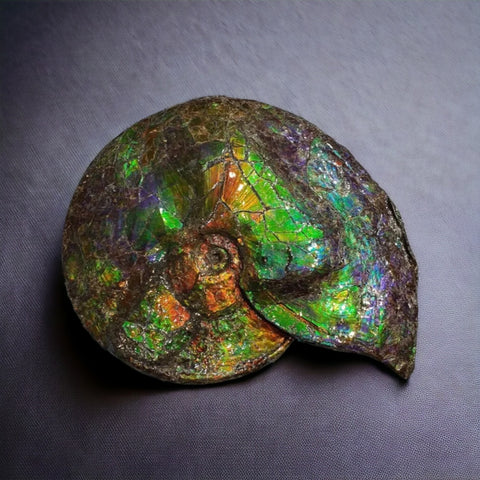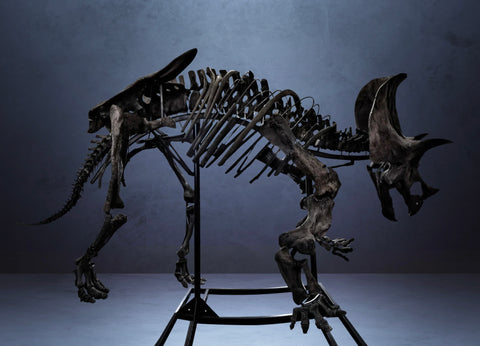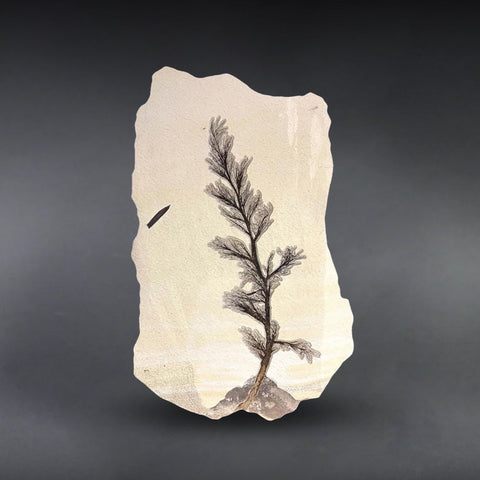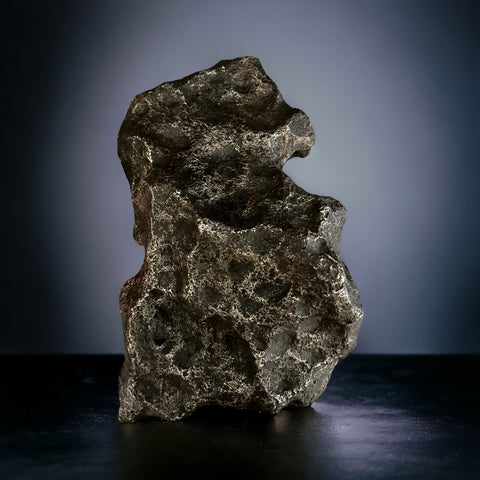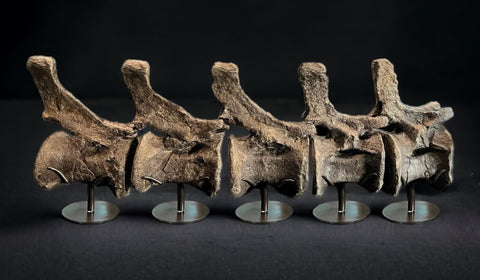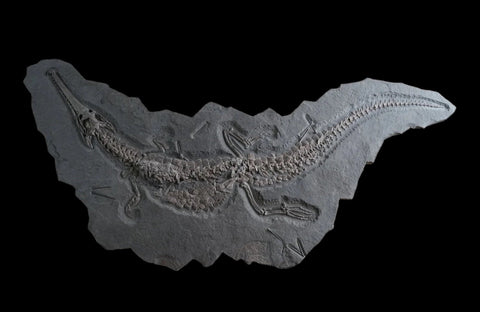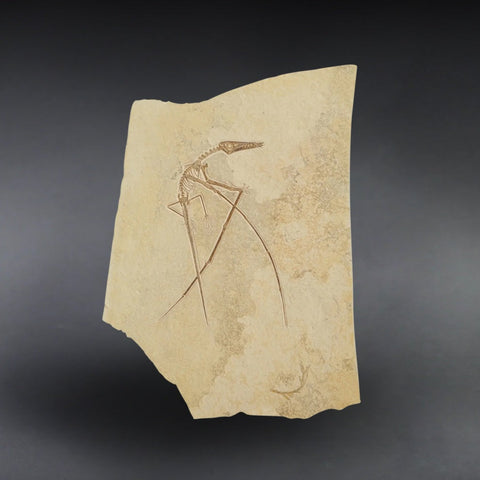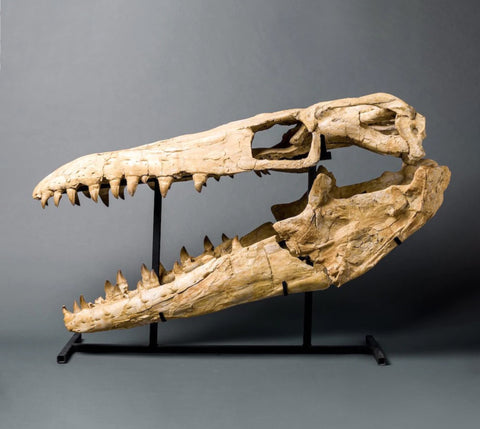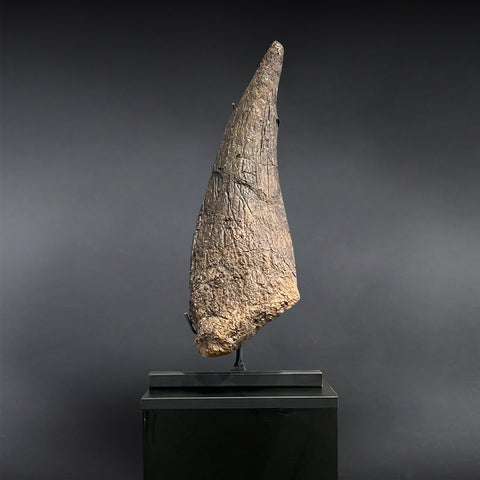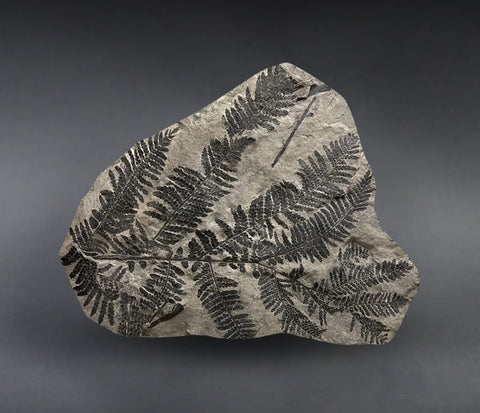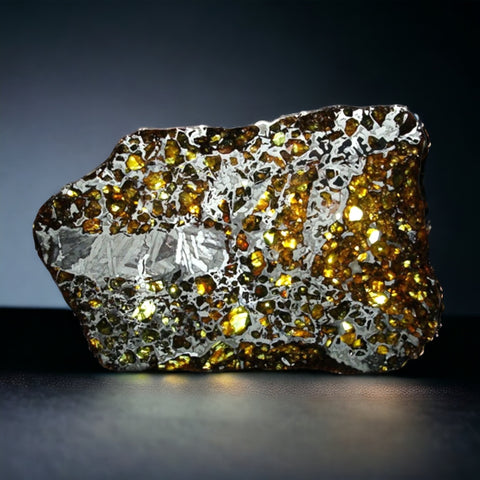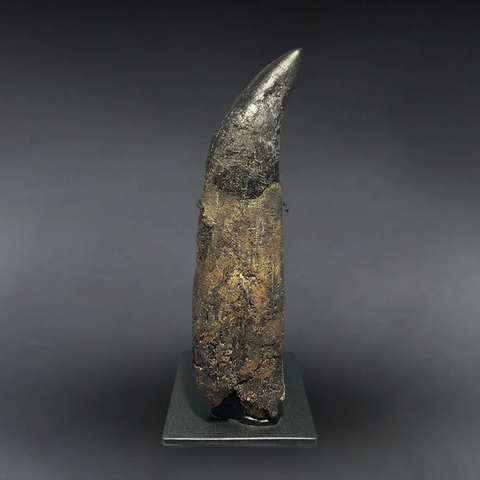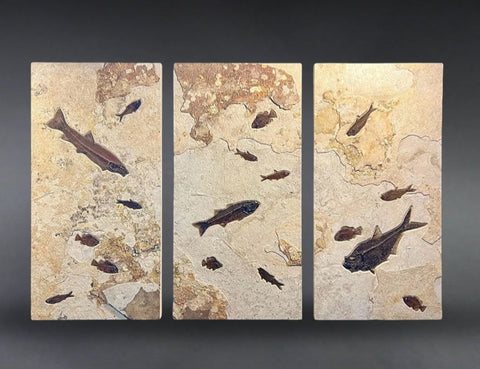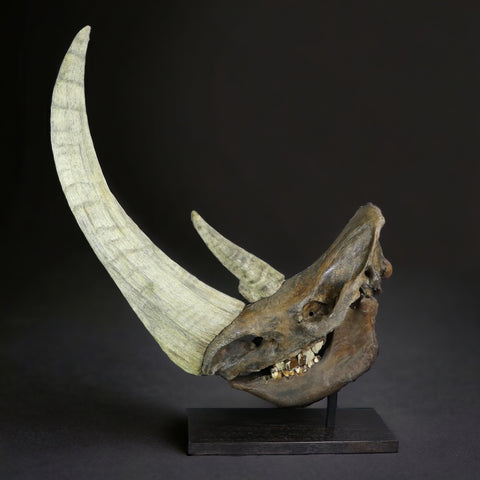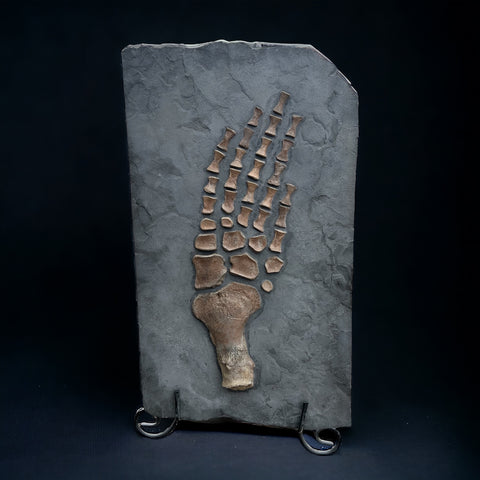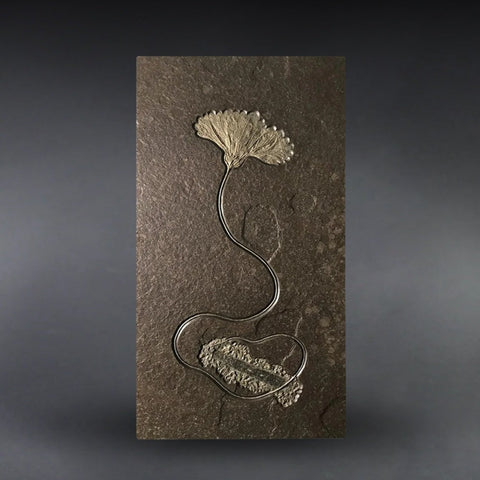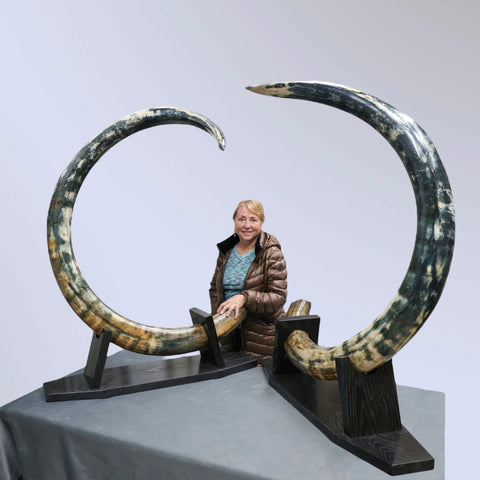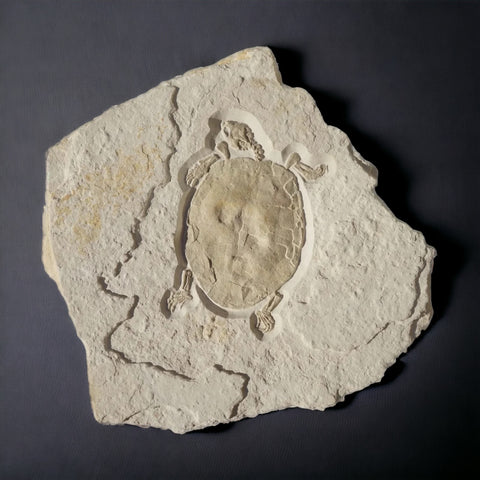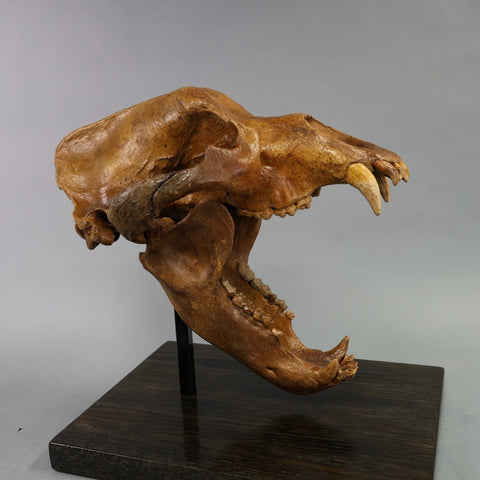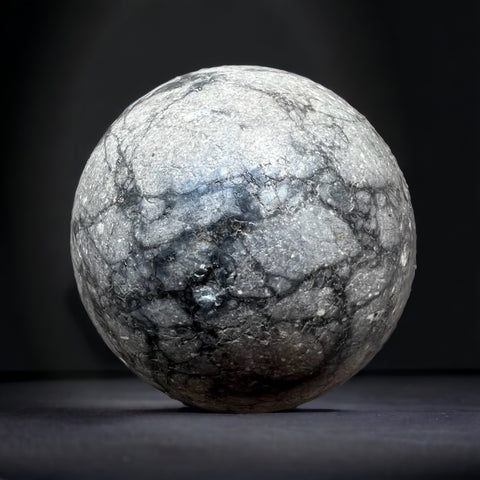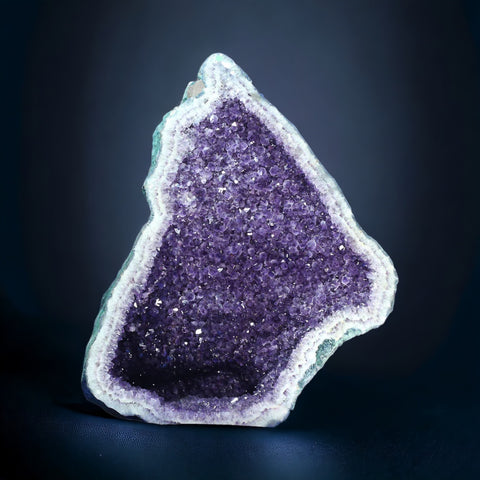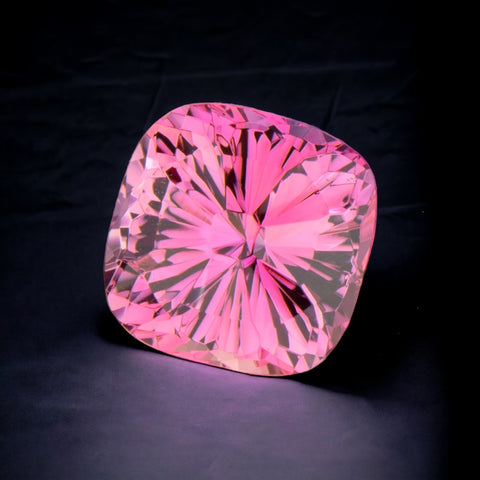Iridescent Ammonite, Bearpaw Formation, Canada
This piece has been sold, but we may have a similar item available. Contact us online to make an inquiry.
This Placenticeras costatum specimen is a stunning example of the famous iridescent ammonites from Canada - its shell is preserved with gorgeous ammolite.
Ammolite is a rare, opal-like gemstone found only in Alberta's Upper Cretaceous Bearpaw formation, just east of the Rocky Mountains. This piece displays extremely bright colours, including different shads of red, orange, gold, green, and a significant showing of rare blue and purple. It has excellent shape and beautiful ribbing; a very aesthetic overall shape, with beautiful coloration on both sides. Complete specimens like this, especially with such intense hues, high lustre, and variety colours, are rare and highly sought-after.
- Government Registration number: 4(1179)
- Size: 17.5" / 44.5 cm
- Deposit: Bearpaw Formation
- Location: Southern Alberta, Canada
- Age: Late Cretaceous (71 million years old)
- Certificate of authenticity included
- Can be shipped internationally
- Wooden stand included
Contact Us for more information.
Ammonites belong to the Mollusca Phylum in a Class known as Cephalopods – “head-footed” creatures such as octopus and squid. They swam in ancient oceans from 400 million years ago, to their extinction, along with the dinosaurs, 65 million years ago.
Ammonites were free floating invertebrates that were attacked by plesiosaurs and mosasaurs, two groups of gigantic marine reptiles. One way that ammonites could avoid an attack was to quickly change their buoyancy levels, zig zagging and sinking rapidly.
These incredible prehistoric animals ranged in size from tiny species only a few centimetres in diameter to the monstrous Cretaceous ammonite, Parapuzosia seppenradensis, which grew to about 3 meters and would probably weigh close to 1500 kilograms!
You may also like
Triceratops Skeleton, Hell Creek Formation, United States
This piece has been sold, but we may have a similar item available. Contact us online to make an inquiry.
Palm Inflorescence, Green River Formation, United States
This piece has been sold, but we may have a similar item available. Contact us online to make an inquiry.
Iron Meteorite, Campo del Cielo, Argentina
This piece has been sold, but we may have a similar item available. Contact us online to make an inquiry.
Woolly Mammoth Tusk, Alaska, United States
This piece has been sold, but we may have a similar item available. Contact us online to make an inquiry.
Sauropod Dinosaur Vertebrae, Morrison Formation, United States
This piece has been sold, but we may have a similar item available. Contact us online to make an inquiry.
Jurassic Crocodile, Posidonia Shale, Germany
This piece has been sold, but we may have a similar item available. Contact us online to make an inquiry.
Pterosaur Skeleton, Solnhofen Limestone, Germany
This piece has been sold, but we may have a similar item available. Contact us online to make an inquiry.
Mosasaur Skull, Oulad Abdoun Basin, Morocco
This piece has been sold, but we may have a similar item available. Contact us online to make an inquiry.
Triceratops Brow Horn, Hell Creek Formation, United States
This piece has been sold, but we may have a similar item available. Contact us online to make an inquiry.
Carboniferous Fern, Montceau-les-Mines, France
This piece has been sold, but we may have a similar item available. Contact us online to make an inquiry.
Pallasite Meteorite, Magadan, Russia
This piece has been sold, but we may have a similar item available. Contact us online to make an inquiry.
Fossil Fish Triptych, Green River Formation, United States
This piece has been sold, but we may have a similar item available. Contact us online to make an inquiry.
Woolly Rhino Skull, Kemerovo Oblast, Russia
This piece has been sold, but we may have a similar item available. Contact us online to make an inquiry.
Plesiosaur Paddle, Oxford Clay, United Kingdom
This piece has been sold, but we may have a similar item available. Contact us online to make an inquiry.
Pyritized Crinoid, Posidonia Shale, Germany
This piece has been sold, but we may have a similar item available. Contact us online to make an inquiry.
Jurassic Turtle, Painten Formation, Germany
This piece has been sold, but we may have a similar item available. Contact us online to make an inquiry.
Fossil Cave Bear Skull, 19”
This piece has been sold, but we may have a similar item available. Contact us online to make an inquiry.
Lunar Meteorite Sphere, Gadamis, Libya
This piece has been sold, but we may have a similar item available. Contact us online to make an inquiry.
Padparadscha Sapphire Cut by Mark Gronlund
This piece has been sold, but we may have a similar item available. Contact us online to make an inquiry.
Gem Silica Fantasia Carving by Glenn Lehrer
This piece has been sold, but we may have a similar item available. Contact us online to make an inquiry.

